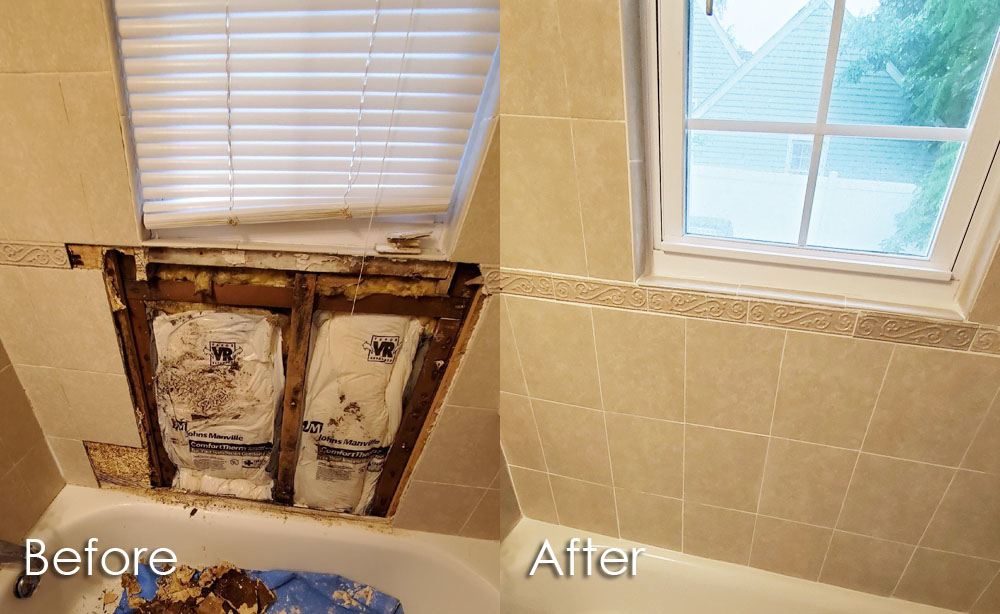Just about every person maintains their own individual piece of advice on the subject of How to Repair and Prevent Bathroom Water Damage.

The shower room is exceptionally at risk for wet buildup and also potential water damage due to the frequent use water in it. This short article uses basic examination strategies to aid identifying water damages threats.
The constant use water in the washroom makes it exceptionally at risk for wet buildup as well as potential water damage. By inspecting it routinely, you can reduce water relevant problems.
The adhering to collection of assessments is simple to carry out as well as ought to be done once in every 3 months in order to keep your restroom in good shape and to stop possible water problems triggered by the bathtub, the shower, pipe joints and also plumbing, sinks, closets, as well as the bathroom
Do not neglect performing these examinations and also be complete while doing them. Keep in mind that these simple examinations can conserve you a lot of money by providing very early signs for water damage
Sinks and also Cabinets
Sinks as well as cabinets are revealed to wetness as well as humidity day-to-day as well as are frequently forgotten. Check frequently under the sink and on the kitchen counter over it. Fix any type of drip in the catch as it might suggest drainpipe issues. Look around the sink, slow-moving draining pipes may suggest a blocked drainpipe. Replace sink seals if they are cracked or loose.
Bath tub as well as Shower
The shower and also bathtub call for special interest and upkeep. Examine the ceramic tiles and also replace if split. Make sure that there is no missing out on grout in between the ceramic tiles. Inspect as well as replace split caulking at joints where the walls satisfy the floor or the tub. Clogged drains pipes and pipes troubles will stop the bathtub from drying out and may show major troubles below the bath tub. Consult with a specialist immediately to avoid structural damages. Take note of discolorations or soft locations around the bathtub wall surfaces as they might indicate an inner leak.
Plumbing
Signs for water damage are tough to spot considering that most pipes are mounted inside the walls.
Pay special focus to floor covering and wall surfaces dampness and spots as they might indicate an unnoticeable plumbing trouble. Check moisture levels in adjoining spaces too.
The Commode
The toilet is a susceptible water junction. Inspect the water lines as well as look for leakages around the commode seat, in the hose, and under the water tank. If you identify any indications of wetness on the flooring around the commode, check for leaks in the toilet rim and also container seals.
Be aware that hanging toilet bowl antiperspirants raises the opportunities for clogs.
Water Damage Signs In The Bathroom To Avoid Cleanup
Musty smell
This is one of the easiest signs to catch because musty smells are so odorous. The damp, earthy, moldy smell should be a big red flag. The smell will develop when moisture gets trapped in surfaces, and begins to facilitate mold growth. Leaking pipes under cabinets, inside walls, and behind shower fixtures will cause moisture to stay trapped and not dry, which will lead to mold growth and spread. As soon as you notice any musty smells in your bathroom, have it checked for hidden water damage and cleanup signs.
Visible mold
If the smell isn’t there to give it away, sometimes you will actually see mold growth. Finding mold in your bathroom is a serious problem, because mold is very harmful to your health. By the time mold growth is visible, it also means that water damage has already occurred and been present for some time. The only way the mold problem can be resolved is to find the source of the moisture and get it stopped. To safely and adequately remove mold, you need to have professionals handle the remediation. Do not waste any time in getting mold problems addressed, fixed, and sanitized so that you can protect you and your family from the many respiratory symptoms caused by mold exposure.
Damaged floors
Bathroom floors should be able to withstand some exposure to water while still remaining in good condition. However, when excess exposure or water leaks occur, they will begin to damage even the most water-resistant flooring. If you notice any cracking, bubbling, staining, or warping on your bathroom floors, there is probably a water leak somewhere causing the distortion. If you notice areas of the floor have become softer, or even have a spongy feeling, there is probably damage to the subfloor. Subflooring is typically made up of plywood. When plywood is exposed to water or moisture, it will absorb it. Once it has become saturated, the weight of the excess water will cause the wood to swell and soften. Check the floors in your bathroom frequently to catch any of these sings before they lead to damaged subflooring.
Changes on walls
When water leaks behind walls, it will cause changes in the drywall. Peeling plaster, blistering paint, and soggy wallpaper are all good indicators that excess water is building up behind the wall. Water leaking behind drywall will cause it to swell and be soft to the tough. If you start to notice gaps along the trim of your walls, or where tile meets the wall, it could also be a strong indicator that there is a leak behind the wall. Any changes, distortion, or damage on the walls should be evaluated as soon as you notice it to prevent further water damage and cleanup.

As a serious reader about Common Causes of Water Damage in a Bathroom, I figured sharing that blog post was worthwhile. Sharing is caring. Helping people is fun. Thanks so much for going through it.
Book A Free Estimate
Comments on “Ways to Fix a Water-Damaged Wall in the Bathroom”